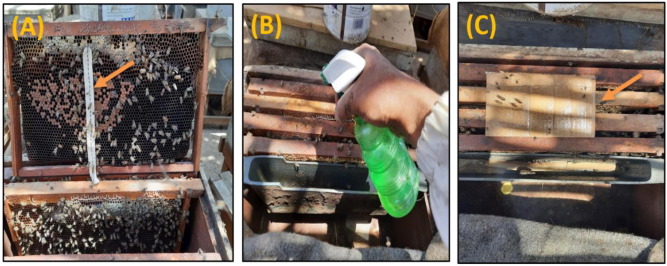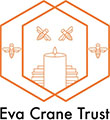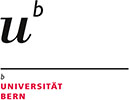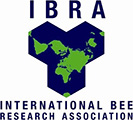Ensuring adequate treatments for acaricide efficacy to combat mite infestation is a pre-requisite for healthy honeybees and a good yield of hive products. Therefore, this study aimed to assess the effect of the mode of application on efficiency of two acaricides; Vapcozin-20 (amitraz) and Mavrik 2F (fluvalinate) against Varroa mite infesting brood and adult honeybees. Methods: To do so, we used 21 honeybee colonies (3 colony per treatment) between December 2018 and March 2019. Varroacides were applied by three different methods: cotton strips (impregnated in each tested acaricide solution for 24 h) or direct spraying (5 mL for each colony) or using carton paper (impregnated in each tested acaricide solution for 5 min) then put directly on the top of brood combs. All treatments were applied twice at a month interval. We also quantified acaricides residues in honey and beeswax after 1, 15, 30, 60 and 90 days of acaricides treatment. Results: The different application methods of both acaricides against V. destructor showed relatively similar efficiencies in both brood and adult honeybees that ranged from 93.8 to 100% for Mavrik 2F and from 83.75 to 96.37% for Vapcozin with no significant differences between different application methods. Fluvalinate residues detected in both honey and wax collected from colonies treated with the strips method, exceeded the maximum residue limits (0.05 ppm for both honey and wax) according to EU Pesticides database. While amitraz residues were not detected in any colonies treated with Vapcozin-20 after 3 months of treatment, regardless of the application method. Conclusions: The three different methods of application of Mavrik 2F and Vapcozin-20 showed great efficiency for the control of Varroa mite, however the application of both miticides using carton paper method was the most appropriate because it showed very minimal acaricides residues.
2412 Members
127 Countries!
127 Countries!




